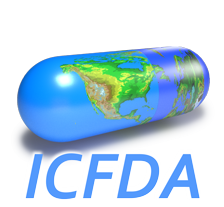We shout a public “WELL DONE AND THANK YOU!!!!” to George Will and the
Washington Post for their encouraging article on the Colorado School
Board Resolution. Ann Blake-Tracy who was one of three invited to present
documentation to the school board on the damage caused by these drugs
will be doing a radio show this Saturday on this issue. She will be
joined by Patti Johnson, the Colorado School Board member who
introduced the resolution. The interview will be with Phyllis Schlafly,
national head of the Eagle Forum (www.eagleforum.org) at 11:30 AM
Central Time. For a station near you that may carry the show check
their web site or the drugawareness.org site or members.aol.com/atracyp
hd.
Boys Will Be Boys
Or you can just drug them.
By George F. Will
Thursday, December 2, 1999; Page A39
A reaction is underway against drugging children because they are
behaving like children, especially boy children. Colorado’s elected
school board recently voted to discourage what looks like drug abuse in
the service of an ideological agenda. The board urged teachers and
other school personnel to be more restrained about recommending drugs
such as Ritalin for behavior modification of children, and to rely more
on discipline and instruction.
One reason for the vote is that some school violence has been committed
by students taking psychotropic drugs. But even absent a causal
connection between the drugs and violence, there are sound reasons to
recoil from the promiscuous drugging of children.
Consider the supposed epidemic of attention deficit/hyperactivity
disorder (ADHD) that by 1996 had U.S. youngsters consuming 90percent of
the world’s Ritalin. Boys, no parent of one will be surprised to learn,
are much more likely than girls to be diagnosed with ADHD. In1996, 10
percent to 12 percent of all American schoolboys were taking the
addictive Ritalin. (After attending classes on the dangers of drugs?)
One theory holds that ADHD is epidemic because of the modern
acceleration of life–the environmental blitzkrieg of MTV, video games,
e-mail, cell phones, etc. But the magazine Lingua Franca reports that
Ken Jacobson, a doctoral candidate in anthropology at the University of
Massachusetts, conducted a cross-cultural study of ADHD that included
observation of two groups of English school children, one diagnosed
with ADHD, the other not. He observed them with reference to 35
behaviors (e.g., “giggling,” “squirming,” “blurting out”) and found no
significant differences between the groups.
Children, he says, tend to talk, fidget and fool around–“all the
classical ADHD-type behaviors. If you’re predisposed to label any child
as ADHD, the distracted troublemaker or the model student, you’ll find
a way to observe these behaviors.” So what might explain such a
predisposition? Paul R. McHugh, professor of psychiatry at Johns
Hopkins, writing in Commentary, argues that ADHD, “social phobia”
(usual symptom: fear of public speaking) and other disorders certified
by the American Psychiatric Association’s “Diagnostic and Statistical
Manual of Mental Disorders” are proliferating rapidly. This is because
of a growing tendency to regard as mental problems many characteristics
that are really aspects of individuality.
So pharmacology is employed to relieve burdensome aspects of
temperament. “Psychiatric conditions,” says McHugh, “are routinely
differentiated by appearances alone,” even when it is “difficult to
distinguish symptoms of illness from normal variations in human life,”
or from the normal responses of sensitive people to life’s challenges.
But if a condition can be described, it can be named; once named, a
distinct disorder can be linked to a particular treatment. McHugh says
some experts who certify new disorders “receive extravagant annual
retainers from pharmaceutical companies that profit from the promotion
of disorders treatable by the companies’ medications.”
The idea that most individuals deficient inattentiveness or confidence
are sick encourages what McHugh calls pharmacological “mental
cosmetics.” This “should be offensive to anyone who values the richness
of human psychological diversity. Both medically and morally,
encumbering this naturally occurring diversity with the terminology of
disease is a first step toward efforts, however camouflaged, to control
it.” Clearly some children need Ritalin. However, Ken Livingston, of
Vassar’s department of psychology, writing in the Public Interest, says
Ritalin is sometimes used as a diagnostic tool–if it improves a
child’s attention, ADHD is assumed.
But Ritalin, like other stimulants such as caffeine and nicotine,
improves almost everyone’s attention. And Ritalin is a ready resource
for teachers who blur the distinction between education and therapy.
One alternative to Ritalin might be school choice–parents finding
schools suited to their children’s temperaments. But, says Livingston,
when it is difficult to change the institutional environment, “we don’t
think twice about changing the brain of the person who has to live in
it.” This is an age that tries to medicalize every difficulty or
defect. Gwen Broude, also of Vassar, believes that the rambunctiousness
of boys is treated as a mental disorder by people eager to interpret
sex differences as personal deficiencies.
Danielle Crittenden of the Independent Women’s Forum sees the “anti-boy
lobby” behind handwringing about the supposed dangers of reading the
Harry Potter novels, which feature wizardry, witchcraft and other
really neat stuff. The androgyny agenda of progressive thinkers has
reduced children’s literature to bland gruel because, Crittenden says,
there is “zero tolerance for male adventurousness.” The Potter books
recall those traditional boys’ books that satisfied boys’ zeal for
strife and Adventure. Today, Crittenden says, that zeal causes
therapists–they are everywhere–to reach for Ritalin. Harry is brave,
good and constantly battling evil. He should point his broomstick
toward Colorado, where perhaps boys can be boys.
Copyright 1999 The Washington Post Company

